Soil acoustics is a new and exciting branch of ecoacoustics – the science of listening to sound made by the natural world.
People have been listening to whale-song since the 1940s; decoding ultrasonic bats-calls since the 1950s; and identifying bird song using call-libraries since the 1960s. Ecologists now routinely use remote recorders for providing scientifically robust survey data for a whole range of species.
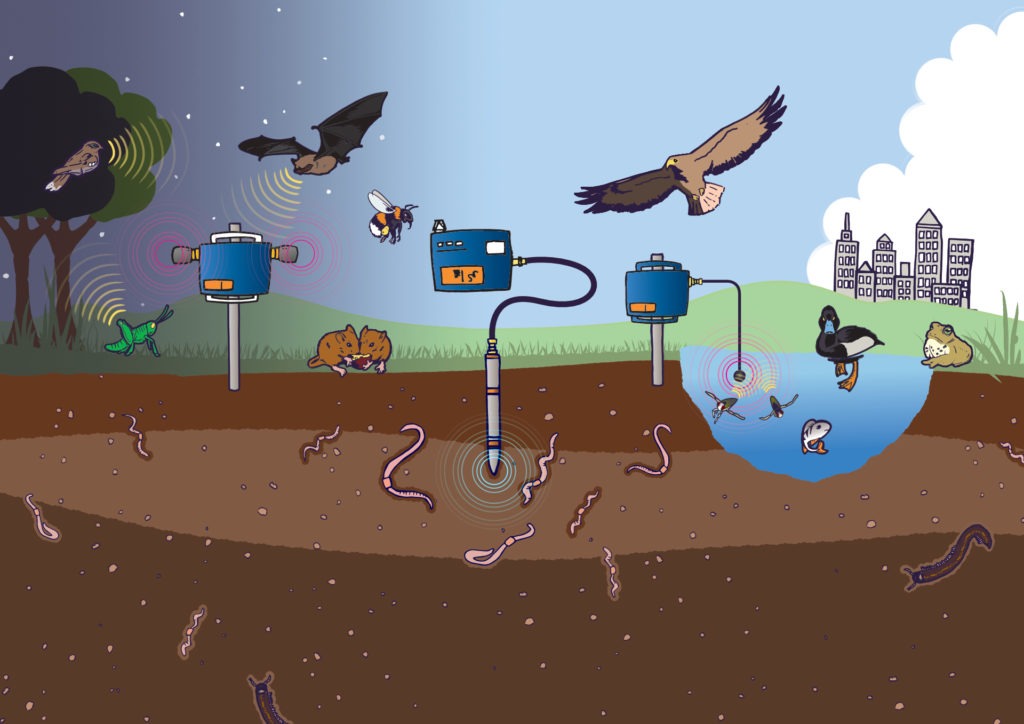
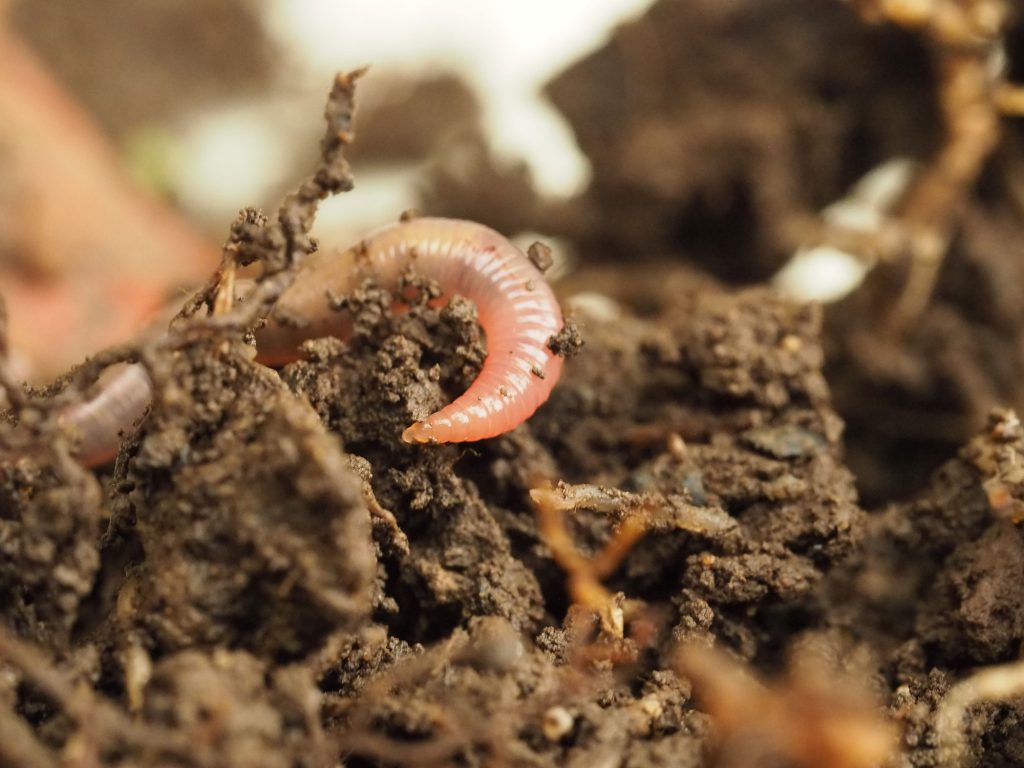
The team at Soil Acoustics has taken these methods and developed a unique recording device for listening to the soil.
An active soil biology is vital in providing a productive growing environment and building climate resilience. We are using sound as a proxy for soil health. This unique approach gives land managers and farmers rapid insights into the biological health of their topsoil – all without the need to take any physical samples or conduct expensive lab tests.

The Soil Acoustics Meter (SAM) is a hand-held unit, connected to a probe containing a contact microphone, which measures the noises made by invertebrates in the soil. Some of these noises are made by them moving through the soil; some are from them moving in the litter-layer on top; and others are noises that are made deliberately by the animals themselves.
During our DEFRA funded research with the University of Warwick, we have built a database of thousands of soil recordings which we have used to develop a bespoke Acoustic Complexity Index called the Soil Acoustic Quality Index (SAQI) score. This allows you to measure the relative richness of the soundscape within the soil. The higher the abundance and variety of invertebrates present – the higher the SAQI score will be.
By taking measurements from a particular location, or before & after a particular intervention, the SAQI score allows you to measure and track the amount of soil invertebrate activity. The database is made up of soil sounds taken from a range of soil and management types, arable, pastural, regenerative agriculture, vineyards and agro-forestry.


Upload to your portal, to receive the SAQI results & scorecard
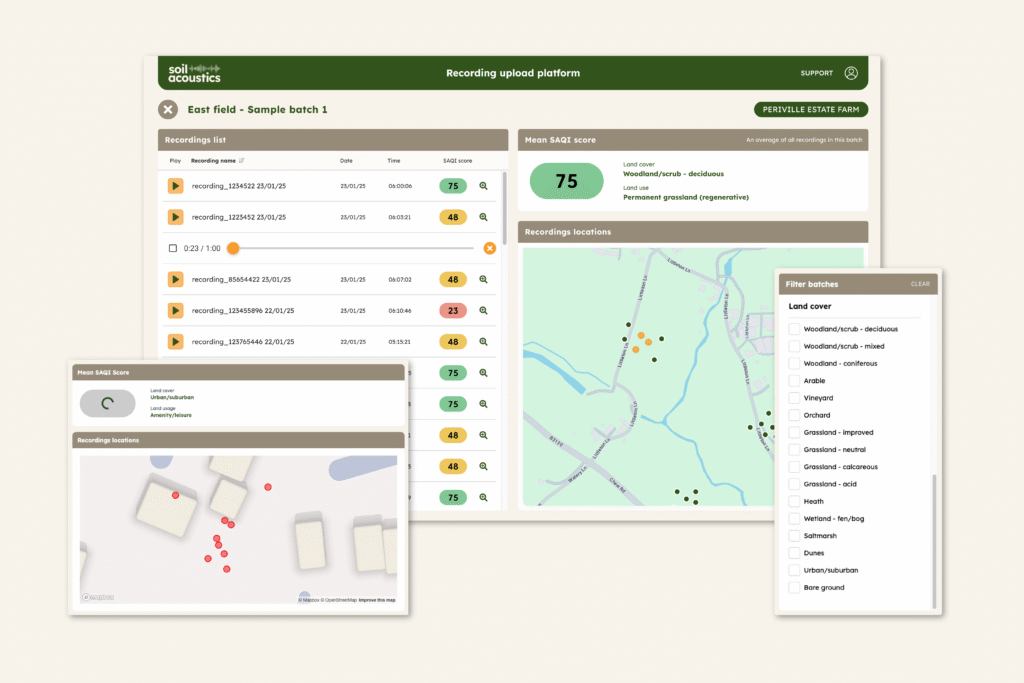
Once you have taken your recordings the upload and analysis process is simple. The first time you connect you will be asked to create a user account which is where you will be able to upload, analyse and view your recordings. You can categorise fields and compare data, listen to the recordings and download reports. A full user guide will be available to help you through the process.
Extensive farm trials have been conducted during the UK research. These included sites in regenerative agriculture schemes, dairy co-ops, vineyards, large country estates and agro-forestry and other conservation and re-wilding projects as part of wider biodiversity monitoring programmes. Samples were taken at Rothamsted on some of their 30yr monitoring fields with comprehensive data on management practices and interventions. Current clients include Ruinart, part of LVMH and Wildfarmed.
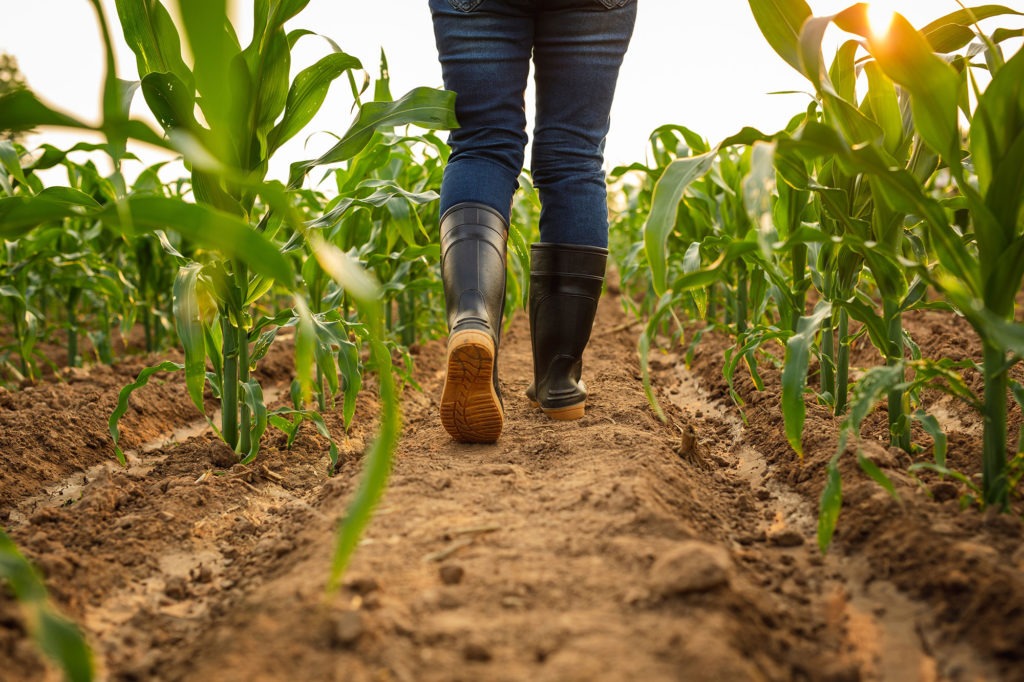
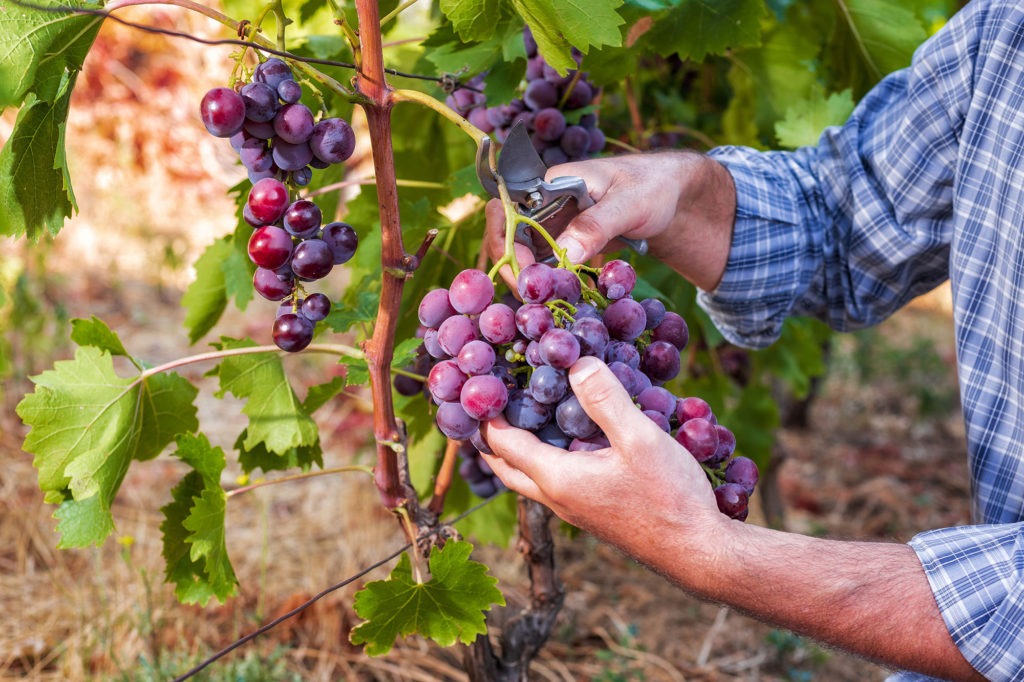
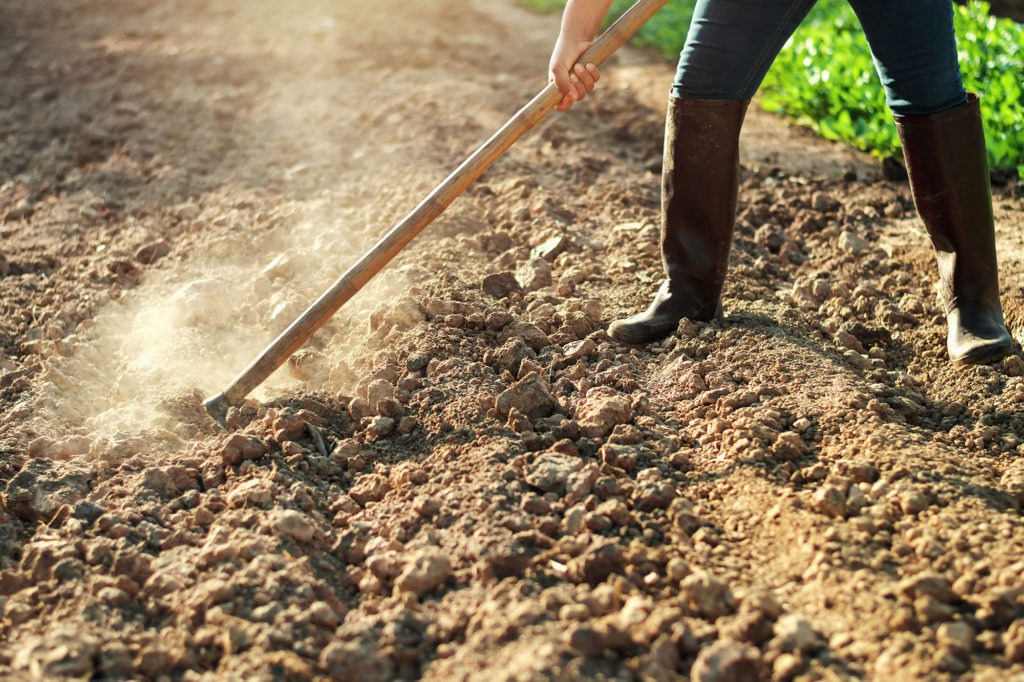

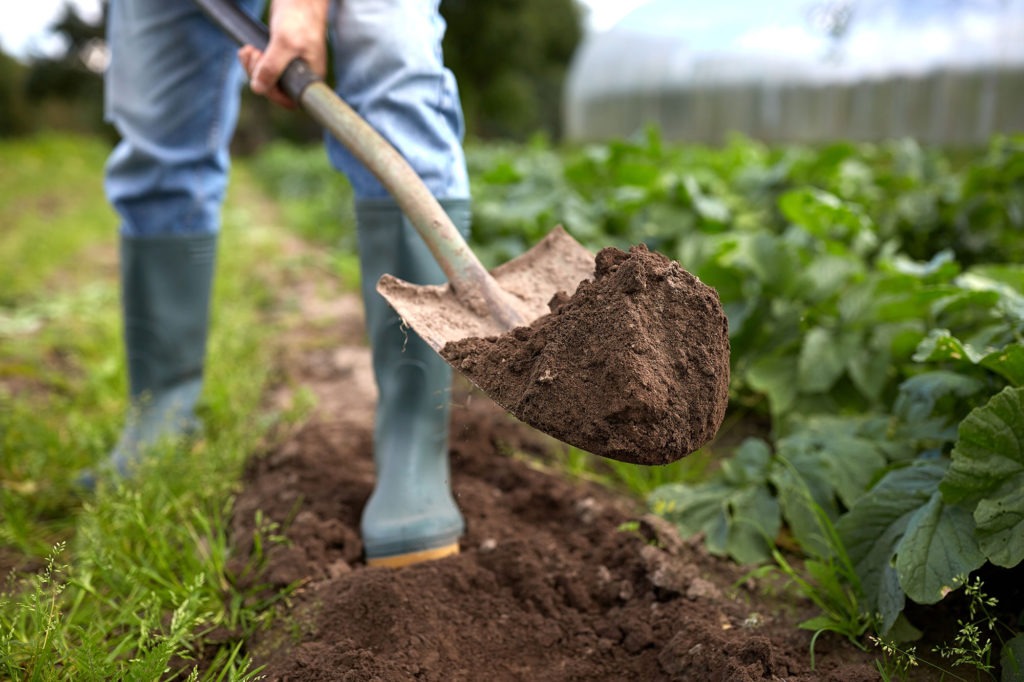
The Soil Acoustic Meter is a device for recording the sounds of organisms, including, worms, beetles, ants, in the soil. It is used for assessing the acoustic complexity and activity in the soil which is an indicator of soil health. Higher soil biodiversity increases productivity.
The soil acoustic meter can be used by anyone with an interest in soil, mainly as a part of a suite of methods to assess soil health in farming, viticulture or conservation. It has already been used to compare the biological diversity of soils under different farming methods.
Most farmers conduct regular soil testing whether for carbon, density, or microbial diversity and are required to submit readings for the various regulatory or subsidy schemes. Recording the sounds of living organisms in the soil can be used more regularly and cost effectively to compare before and after treatments to indicate the health of soil.
The SAM device takes standard AA batteries so that they can be replaced and recycled by the user.
The device can record anything that is moving under the soil, earthworms, beetles, larvae, ants etc.
You can test as often as you like. We recommend testing at least twice a year, late spring and early autumn. As the reporting is largely automated and inexpensive there is the also opportunity for you to gather data before and after certain interventions and treatments, e.g. tilling, slurry, fertiliser treatments, pre- and post-harvest. The more samples taken and more information about soil health you can gather.
Worm pits allow farmers to see and count the worms but take time to dig and cause disturbance to the ground. The SAM can be positioned in exactly the same place each time (GPS located) and record more scientifically robust data.
Depending on what information you would like to collect, we recommend testing 10 sites per setting. If the field or area is more variable in soil or management type then take 10 sound samples in each area. This gives a fair spread of samples to produce a useful report.
Around a meter – one stride
Yes, it’s best to record on a still dry day or to cover the probe with a bucket.
Studies have shown that the more diverse the biodiversity in the soil, the more productive it is. More living things in the soil will generate more sound.
When you have finished recording plug the SAM unit into a computer and upload the data through our client portal – login details will be provided with the SAM when it is delivered.
The SAM uses a standard USB-C lead for connecting. If you do not have a compatible machine then contact your farm adviser for advice who may be able to do the uploads for you.
The data is automatically analysed using a set of algorithms developed by our expert team, alongside published research.
Once you have taken your recordings in the field, analysing your results is very simple. After setting-up your user account on our bespoke Data Portal, you will then be able to upload all of your recordings in the following way;
We have built-in simple filters and a powerful comparison tool, which enables you to compare different batches with one another. By selecting a number of batches – e.g. monthly uploads from the same field – you can see how the SAQI score changes over time. You could also take recording batches before and after known events – e.g. a certain management intervention. The comparison reporting tool will then allow you to track and compare the impact they have had on the invertebrate activity in your topsoil. Compare your traditional and regenerative fields; monitor how weather affects soil invertebrate activity; or design your very own experiment, to reveal endless insights into the invertebrate activity in your soil. All of your comparison reports can be re-done and repeated on-demand, to suit your needs, including detailed PDF exports that you can share with your team.
Yes, as the equipment is designed to provide information on soil health it can be used for associated purposes such as rewilding, agro-foresty and other conservation and research activities.
Once an order is placed, it can take up to 7-10 days for your SAM to be delivered, depending on location. We will keep you informed regularly as to the expected delivery date.
Yes, international shipping is open for European geographies via the shop and includes the early-bird offer.
We now have customers in fourteen countries across the world, with resellers and research partners in different geographies. Please email info@soilacoustics.com for a shipping quote for your address.
Our returns policy will be available once delivery is confirmed.
The box contains a Soil Acoustic Meter, a single replaceable probe with microphone attached, a USB-C to USB-A data cable and set-up instructions.
There are many ways to increase the biological diversity of your soils, however. Please contact your farm adviser or agronomist for specialist advice.